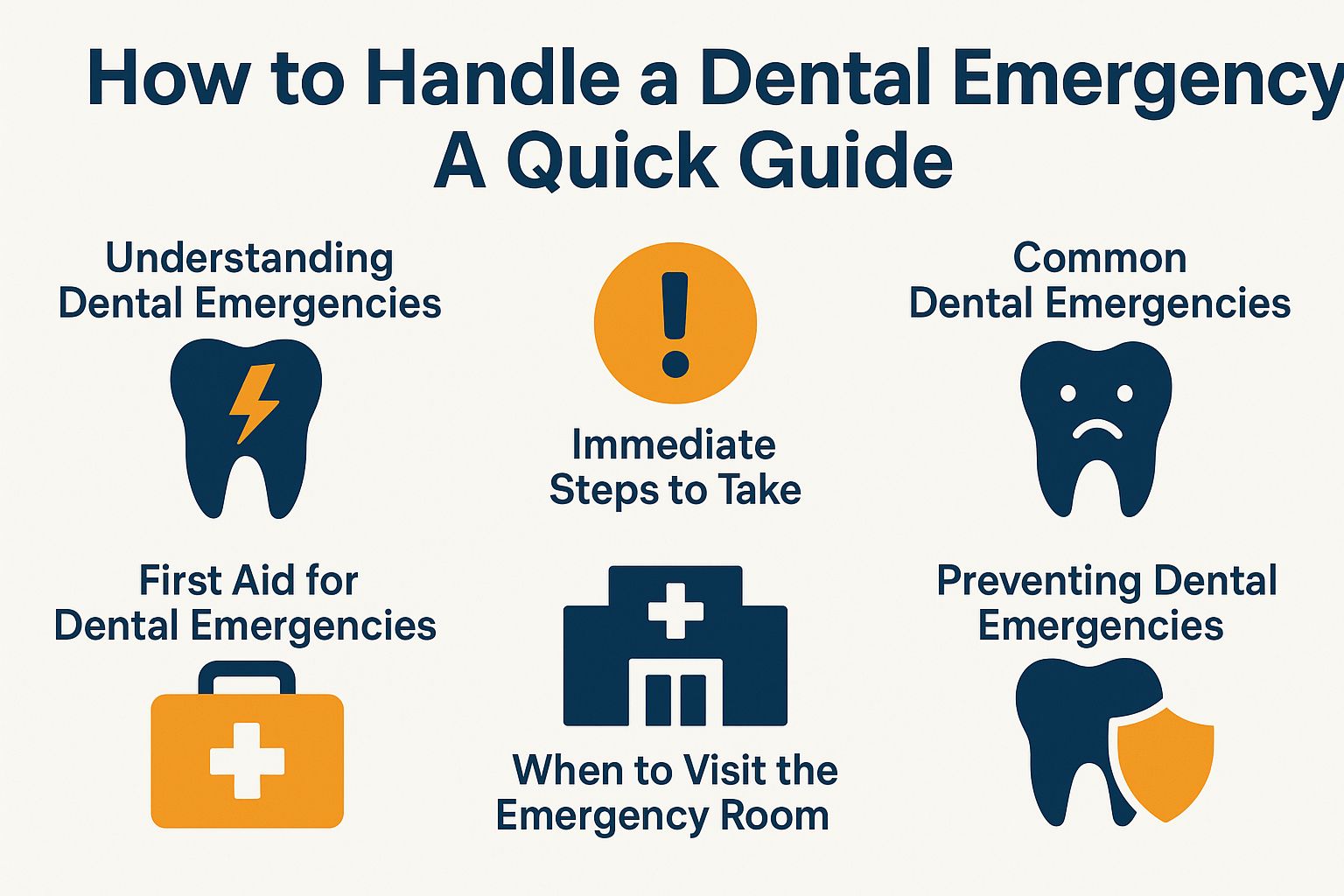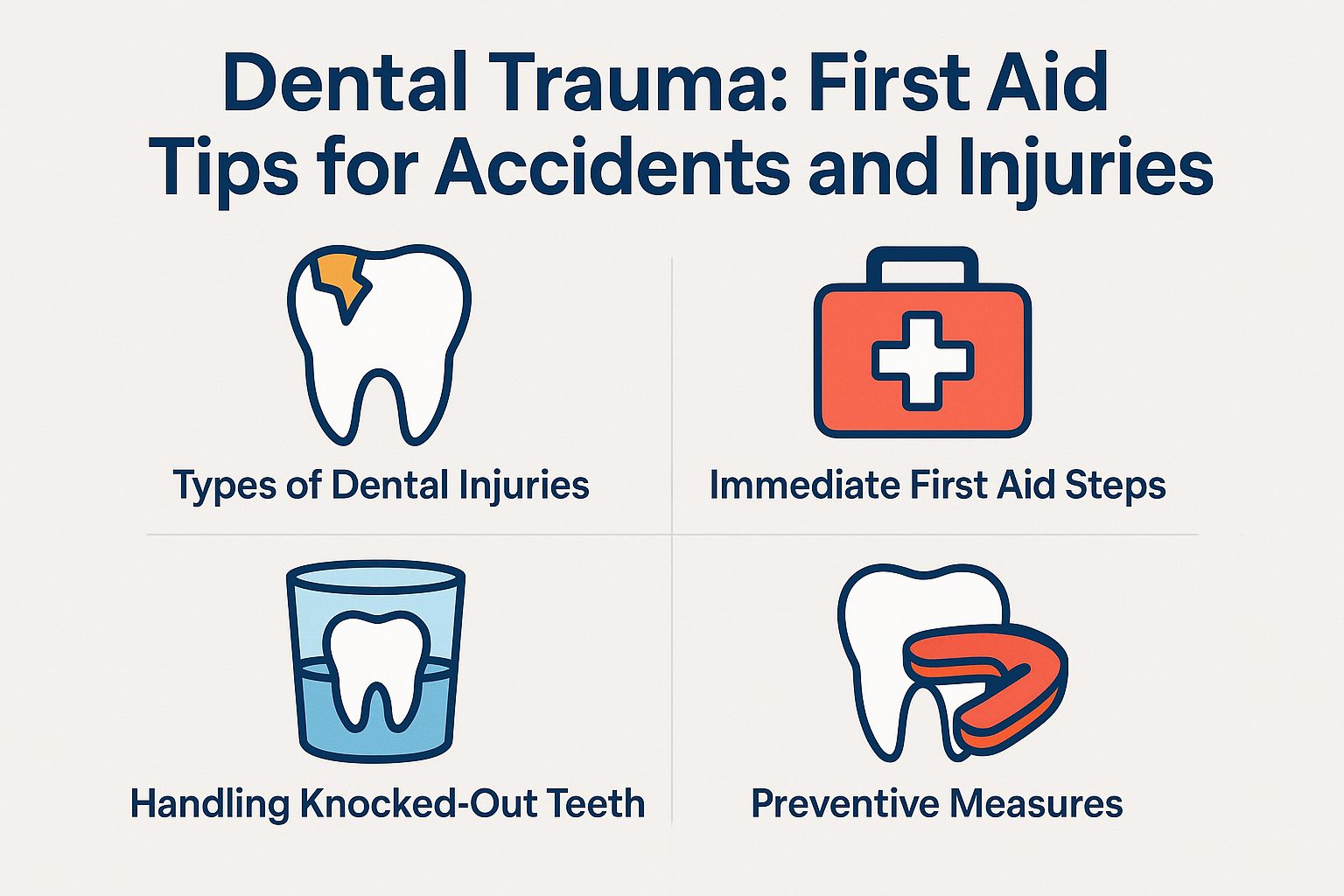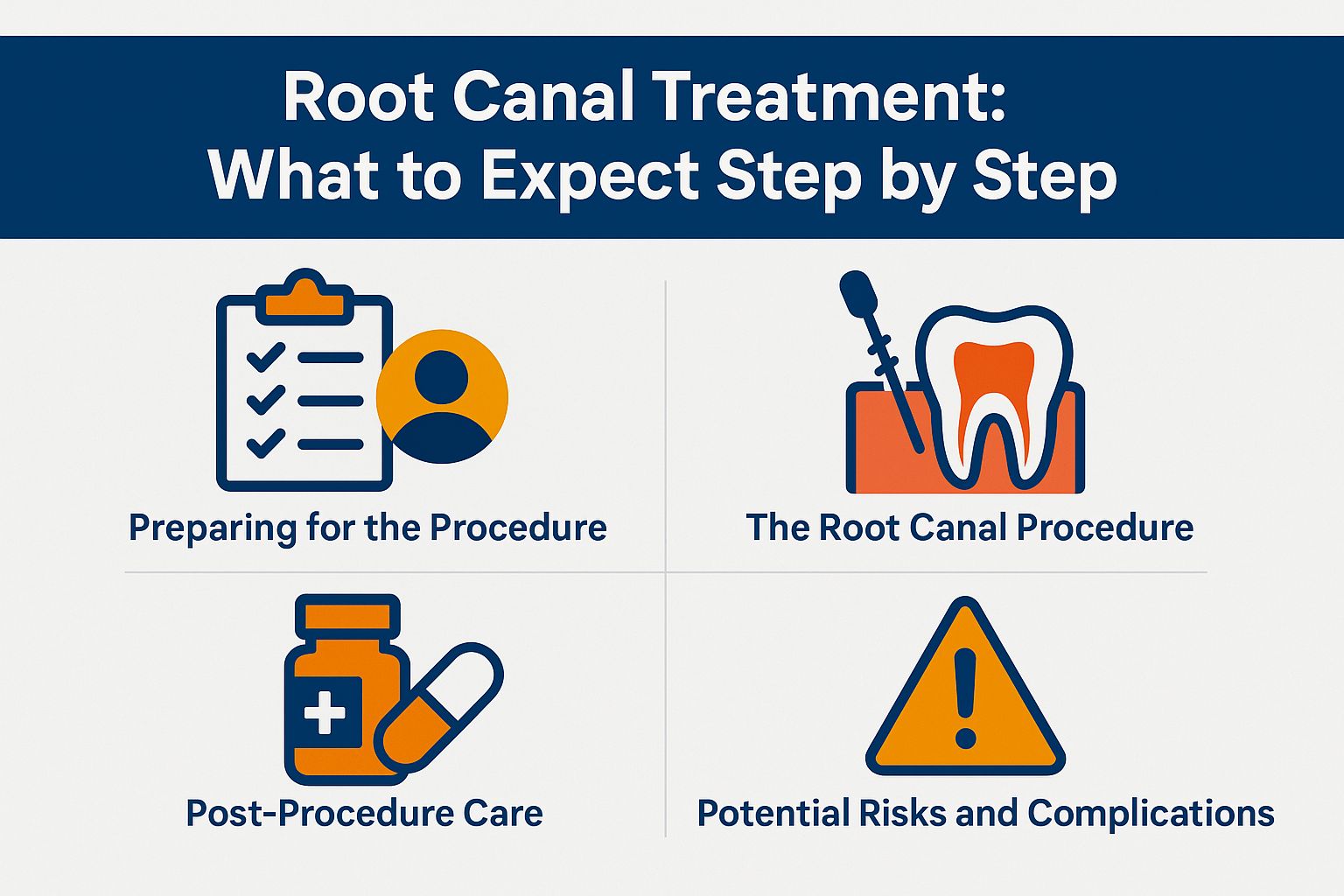
Act swiftly to protect your oral health. In this guide, we’ll explore the causes of lost crowns and immediate steps to take. You’ll also learn effective temporary solutions using dental cement and other materials. By understanding these strategies, you can alleviate discomfort and protect your smile until you can consult a dental professional.
Understanding a Lost Crown and Dental Restoration
A dental crown covers damaged teeth. It restores both function and appearance.
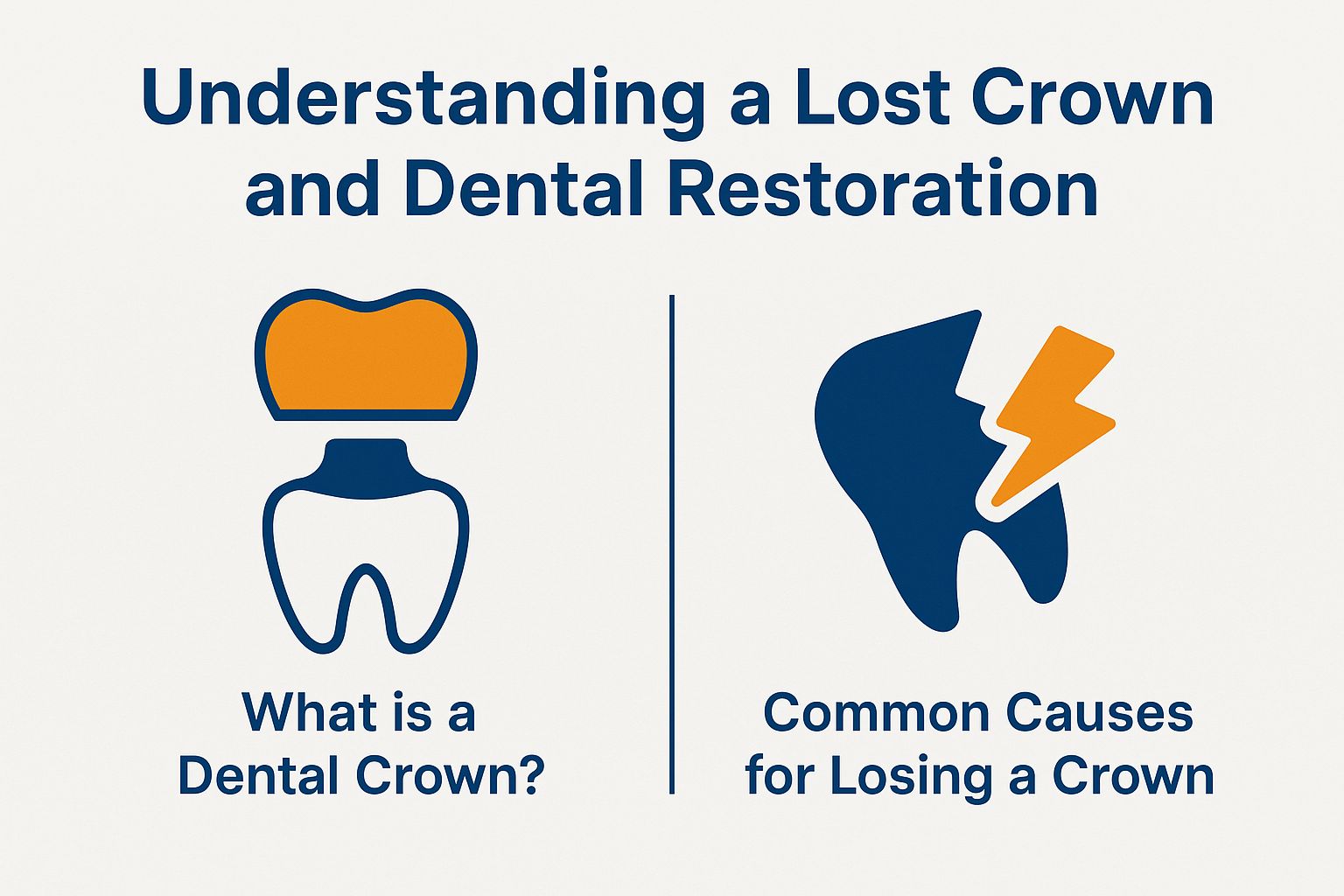
What is a Dental Crown?
Dental crowns, or caps, cover damaged teeth. They enhance strength and improve looks.
Crowns can be made from various materials, each suited for different needs. Porcelain crowns are often preferred for their natural appearance and are particularly suitable for anterior teeth. In contrast, zirconia crowns offer exceptional durability, making them ideal for posterior teeth that are subjected to greater occlusal forces.
Clinical situations such as root canal therapy or significant tooth decay typically necessitate the placement of a crown to restore proper tooth function. Brands like CEREC offer same-day crowns, combining convenience and quality.
A comprehensive understanding of these options enables patients to make informed decisions regarding their dental care.
Common Causes for Losing a Crown
Many factors can loosen dental crowns. About 15% of patients face this issue yearly, often due to decay or poor fit. Here are three major causes of crown loss:
- First, tooth decay beneath the crown can compromise its retention, often resulting from neglected oral hygiene practices and inadequate dental hygiene.
- Second, trauma or excessive force, such as teeth grinding, can result in crowns becoming dislodged during routine activities.
- Finally, poor adhesive quality, frequently arising from inadequate preparation or the use of substandard materials, can undermine the stability of the crown.
Regular dental check-ups and the utilization of high-quality materials are essential strategies to mitigate these issues, thereby reducing the likelihood of crowns coming loose.
Immediate Steps to Take
Act quickly when a crown is lost. This minimizes damage and discomfort, thereby potentially preventing further complications.
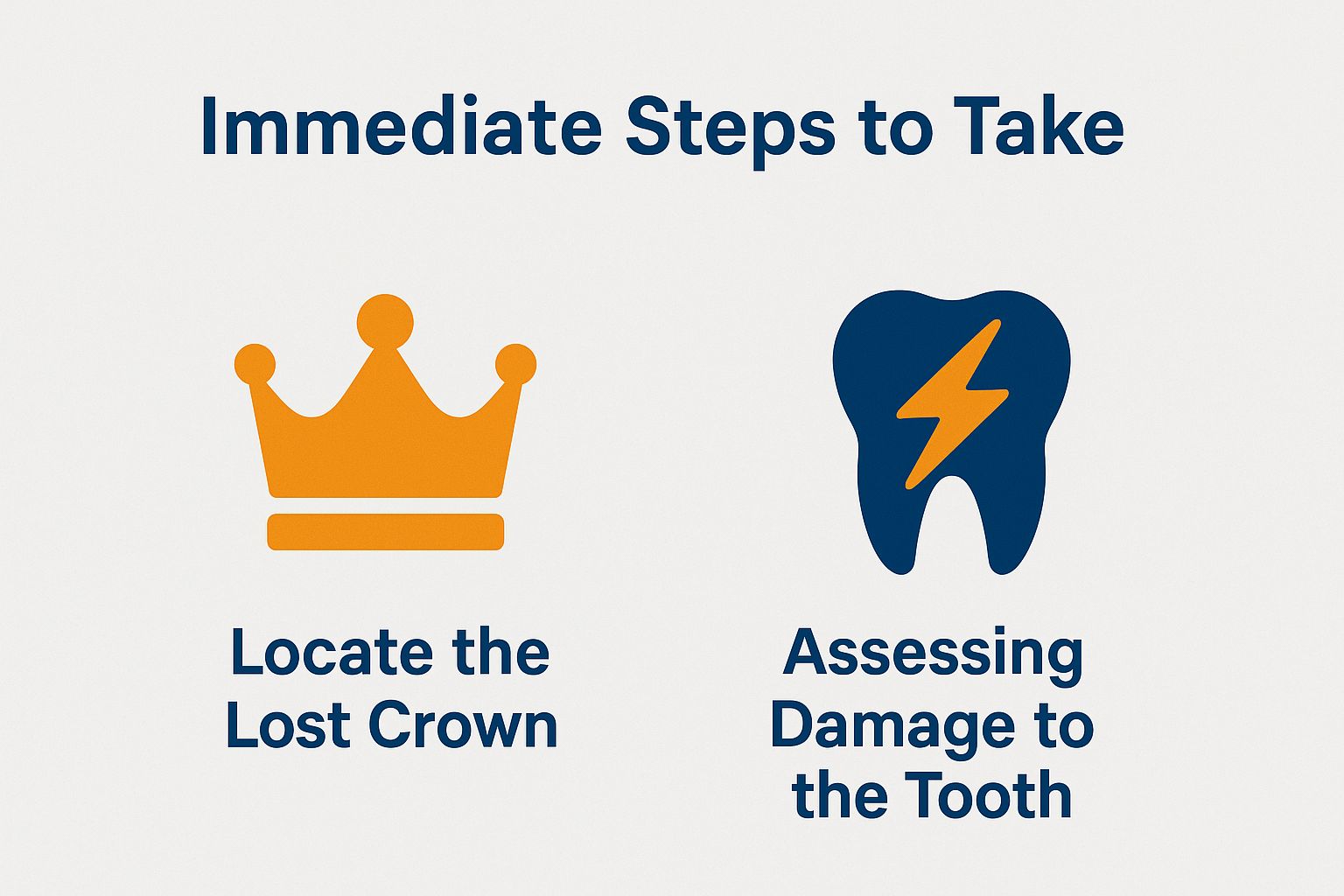
Locate the Lost Crown
Finding a lost crown may allow reattachment. Research shows about 20% can be reused if found quickly, preventing dental emergencies.
To initiate the search, it is advisable to retrace one’s steps to the last known location, whether that may be at home, in the workplace, or at a social gathering.
It is prudent to conduct a careful inspection of any food or beverages consumed immediately prior to losing the crown, as it may have become dislodged during the eating process. Additionally, personal belongings such as jackets or bags should not be overlooked, as they may contain the misplaced crown.
Maintaining proper hygiene is essential; should the crown be located, it is important to gently rinse both the crown and the mouth with warm water to minimize the risk of infection before seeking dental assistance.
Assessing Damage to the Tooth
Check the tooth under the lost crown carefully. About 30% of cases show decay needing immediate care.
Begin by examining the affected area for visible signs of damage, such as pain, swelling, or discoloration, as these may indicate more serious underlying issues. To evaluate sensitivity, gently apply cold water to the tooth and observe the reaction.
If you experience significant discomfort or notice deterioration, contact a dentist right away for evaluation.
Take photographs of the affected tooth. This helps the dentist understand the issue better during your visit.
Temporary Fixes at Home
You can take temporary measures to ease discomfort and protect your tooth before visiting a dentist.

Using Dental Cement and Temporary Solutions
Dental cement is available at pharmacies for about $10 to $20. It effectively holds a crown in place when applied correctly.
To use dental cement, first clean the crown and tooth surface with warm water to remove debris. Then, apply a small amount of cement inside the crown.
Avoid using too much cement to prevent overflow, which can complicate removal. Gently press the crown back onto the tooth and hold it for at least five minutes for a proper fit.
If any cement seeps out, it should be promptly wiped away with a damp cloth before it sets.
Temporary Adhesives and Dental Wax
You can use dental wax as a cushion for a lost crown. It provides relief until you can see a dentist.
To apply dental wax effectively, begin by rolling a small piece into a ball. Subsequently, place the wax gently over the exposed area of the tooth where the crown has been lost, ensuring full coverage of the sensitive surface. Lightly press the wax to secure it in place.
You can find dental wax at local drugstores for $5 to $15. This simple solution improves comfort while you arrange a dental appointment for a permanent fix.
Managing Discomfort
It’s essential to manage discomfort after losing a crown. About 40% of people feel significant pain while waiting for their dental appointment.

Pain Relief Options
Over-the-counter pain relief options, like ibuprofen, can help reduce discomfort. The typical dosage is 200-400 mg every 4-6 hours.
Along with ibuprofen, acetaminophen may be considered, generally dosed at 500-1000 mg every 4-6 hours, as it is known to be gentler on the stomach.
For individuals interested in natural remedies, clove oil can be applied directly to the affected area due to its analgesic properties. Additionally, saltwater rinses can help reduce inflammation, particularly following dental issues; a simple mixture of one teaspoon of salt in a cup of warm water, rinsed several times a day, may provide relief.
It is advisable to consult with a healthcare provider prior to initiating any new treatments, particularly for those with pre-existing medical conditions.
Dietary Considerations for Sensitive Tooth Comfort
Adjusting your diet can ease discomfort. Avoid foods that worsen sensitivity, like sugar-free gum.
Avoid hard, crunchy foods like chips, nuts, and raw vegetables, as they can irritate sensitive teeth. Instead, try incorporating soft foods, such as:
- Yogurt
- Mashed potatoes
- Smoothies
Avoid consuming very hot or very cold items. Steer clear of hot drinks like coffee or tea and icy beverages. Lukewarm soups can provide comfort without triggering sensitivity.
For personalized guidance, it is prudent to consult with a dentist, who can offer specific dietary recommendations tailored to your individual condition.
When to Seek Professional Help
It’s crucial to know when to seek help from a dentist. About 25% of people delay treatment, which increases the risk of complications.
When to Seek Immediate Dental Care
If you have severe pain, swelling, or signs of infection like fever, seek immediate dental care from an oral surgeon. In Los Angeles, Wilshire Smile Studio offers prompt assistance.
Ignoring these symptoms can lead to serious problems. Persistent pain may mean a deep cavity or abscess, risking tooth loss or extraction.
Swelling or pus indicates an active infection. If untreated, it can spread and cause systemic health issues. Additionally, even a mild fever may indicate that the body is combating an infection, which, if not addressed, could lead to further complications.
Responding to these signs quickly can prevent more severe and costly procedures in the future.
What to Expect During a Dental Appointment
Knowing what to expect during a dental appointment can help reduce anxiety. About 60% of patients feel nervous before their visits.
Typically, the appointment begins with an initial examination that lasts approximately 10 to 15 minutes, during which the dentist assesses the affected area. If deemed necessary, X-rays may be taken to evaluate the underlying tooth structure, which can add an additional 10 to 20 minutes to the appointment duration.
After reviewing the findings, the dentist will discuss options for reattaching or replacing the crown. This may take 15 to 30 minutes, depending on the specifics of the case. Most appointments generally last between 1 to 2 hours, ensuring that patients leave with a comprehensive understanding of the subsequent steps.
Preventing Future Issues
Taking proactive steps can greatly reduce the risk of crown loss and improve your overall dental health.
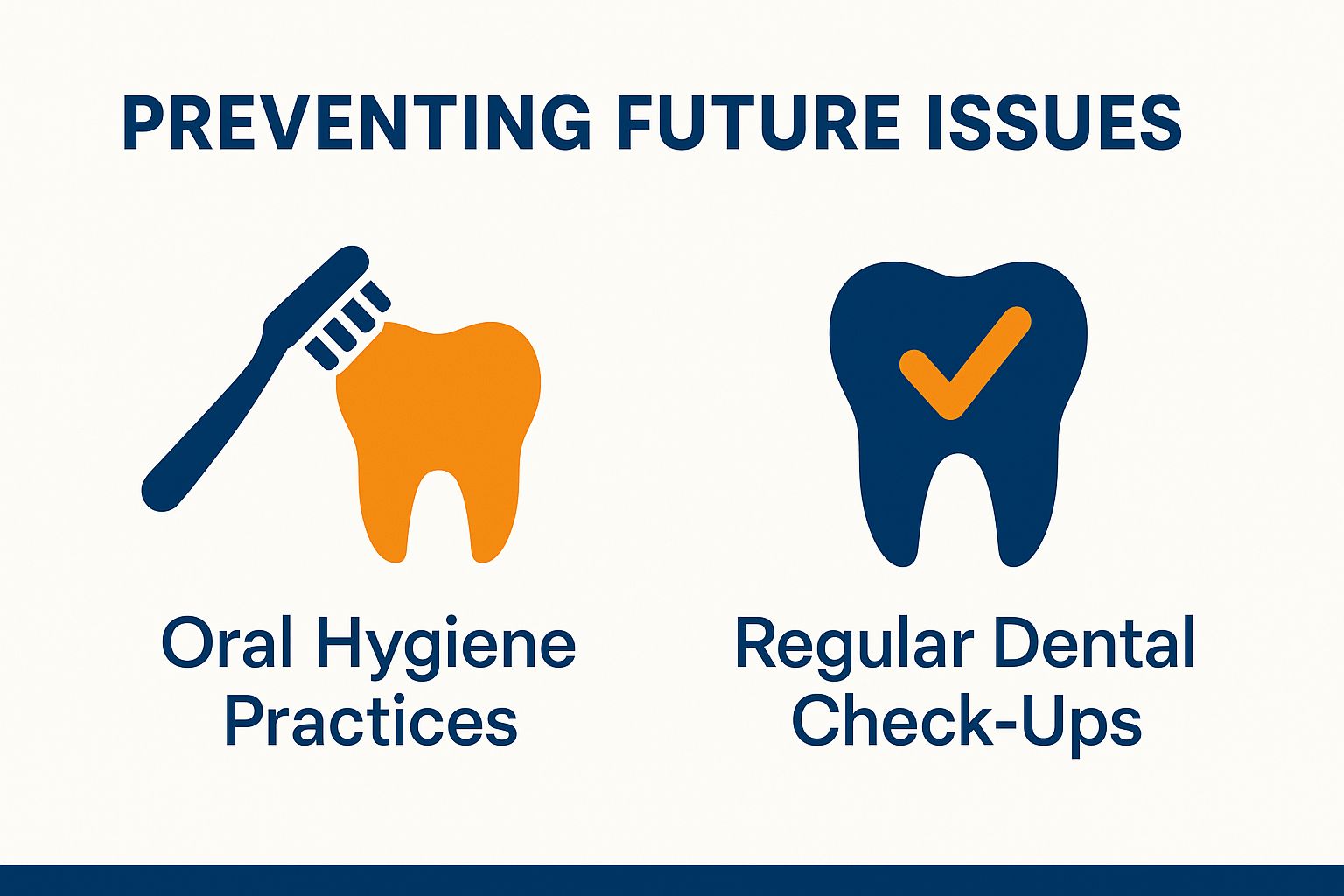
Oral Hygiene Practices
Brushing twice daily with fluoride toothpaste can cut the need for crowns by up to 40% and prevent issues like impacted wisdom teeth. To optimize oral health, it is advisable to incorporate the following practices into your daily routine:
- Regularly brush and floss to prevent gum disease.
- Use an antibacterial mouthwash to help prevent mouth cancer.
- Limit the consumption of sugary snacks and try home remedies for maintaining oral freshness.
- Visit your dentist regularly for check-ups.
The American Dental Association recommends brushing for at least two minutes to clean all surfaces. Floss at least once a day. Rinsing with an antibacterial mouthwash, such as Listerine, can further help in reducing plaque buildup.
An effective oral hygiene routine may include brushing after breakfast and before bedtime, with the use of mouthwash following lunch to maintain freshness. This comprehensive approach not only protects against cavities but also promotes overall dental health.
Regular Dental Check-Ups
Regular dental check-ups, recommended every six months, can catch issues before they escalate. This can reduce emergencies by 30%. These visits enable dentists to conduct comprehensive examinations and professional cleanings, significantly lowering the risk of cavities and gum disease.
For example, dental professionals at locations such as Wilshire Smile Studio in Los Angeles are able to detect early signs of decay or plaque buildup, allowing for prompt intervention. Routine check-ups can also help spot systemic health issues. Studies show that people who keep regular appointments are 60% less likely to face serious dental problems.
Making these visits a priority improves oral health and reduces dental costs.

